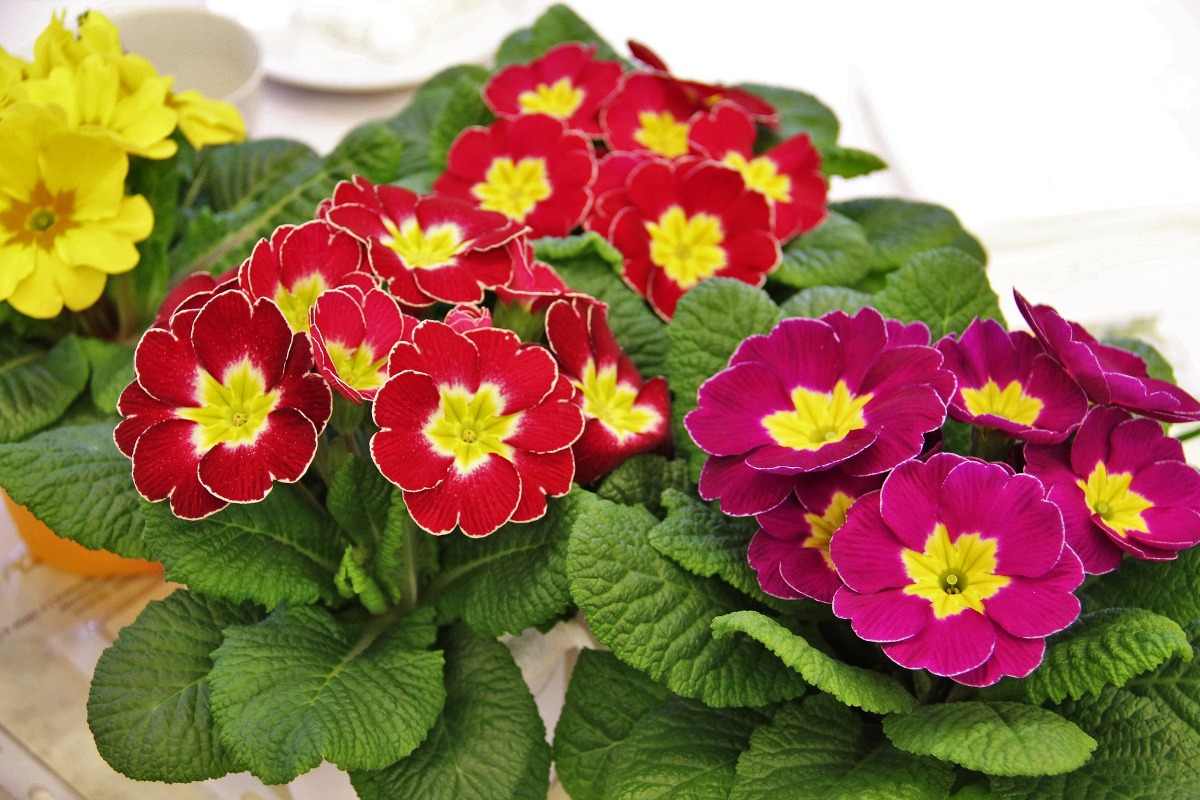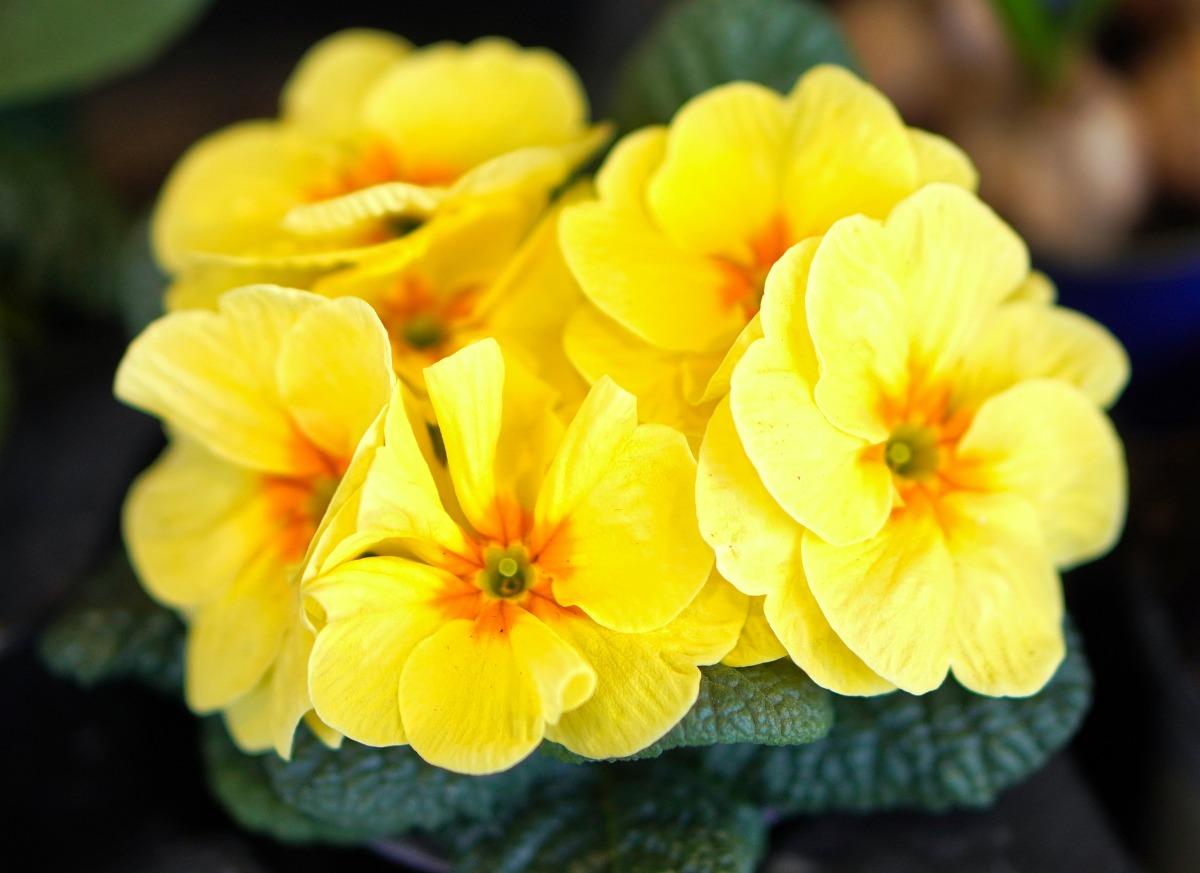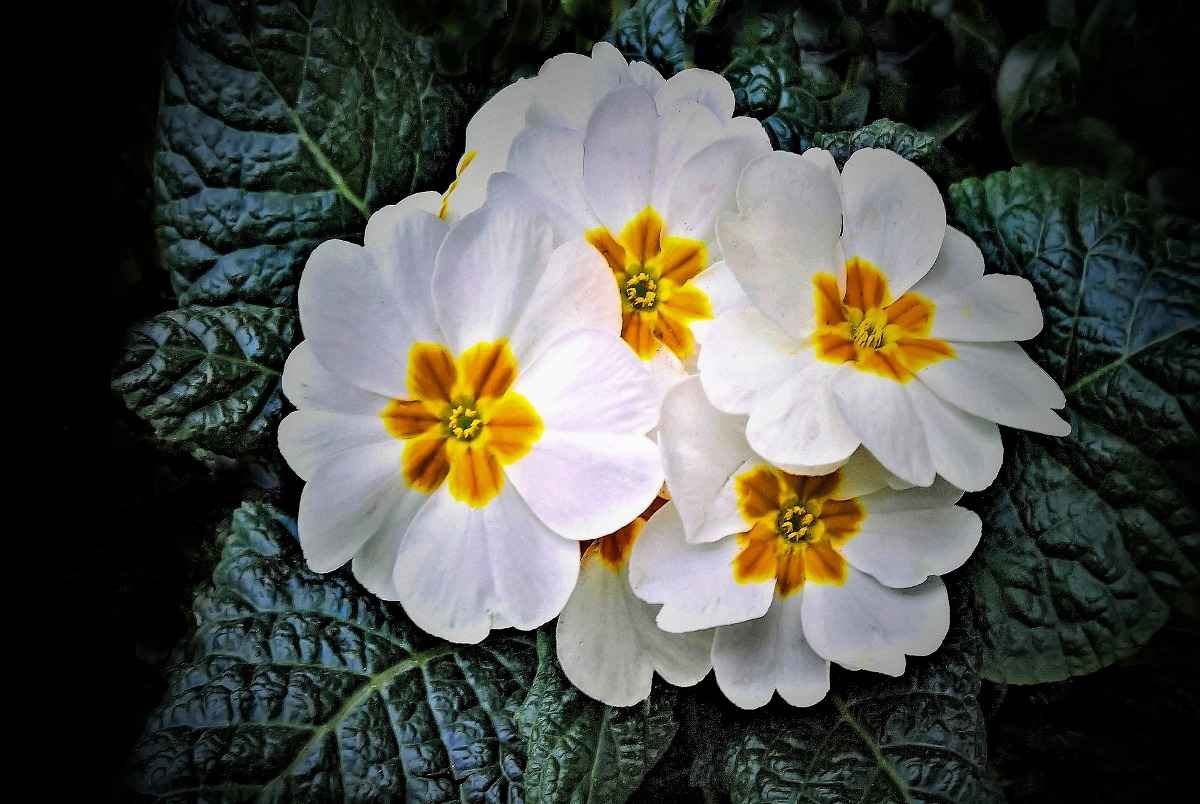Introduction to growing Primrose indoors
The Primrose flower is a member of the family primula. The Primrose houseplant is found for sale in the late winter or early spring. Primrose indoor care is important if you would like these lovely plants to survive and produce an abundance of bright, fragrant blossoms over a long bloom season. Potted Primrose flowers become available in winter. Choose plants with buds that are just beginning to open, for the longest-lasting displays. Primrose grown indoors in pots is short-lived plants, usually lasting only about 6 months; the plants fade with the last of the blossoms. In this article we also discuss below topics;
- How do you care for potted Primrose plants
- How long does Primrose plant take to grow
- Primrose indoor care
- Do Primroses do well in pots
- How do you plant Primrose
- Tips for growing Primrose plants
- Growing Primrose plant problems
A step by step guide to growing Primrose indoors
Primrose flowers bloom in the early spring season, offering a variety of form, size, and color. They are suitable for use in garden beds and borders as well as in pots or for naturalizing areas of the lawn. When given the proper growing conditions, these vigorous Primrose plants will multiply each year, adding stunning colors to the landscape.
Growing conditions for Primrose plants
Primrose plants require the right conditions of sunlight, water, and food. These tips will help your plant thrive indoors;
Primrose prefers brightly lit windowsills, but the indoor fancy Primrose plant should not be exposed to direct sunlight. When planting them outside, put in a shady and dappled corner. Be mindful of the climate of the room, as well, for Primrose does best in moderate to cool temperatures intense heat can cause wilting and plant failure.

These Primrose plants need a loose, well-drained, very rich potting mix and adequate, even, and regular moisture to thrive. Then, they shouldn’t be soggy, but don’t let the soil dry out either. Look for signs of wilting and adjust watering accordingly. Fertilize with a weak liquid fertilizer during plant growth and flowering. Because these are not meant to be long-lived indoor plants, a single application of controlled-release fertilizer can be adequate to get them through the flowering season.
Soil and containers for growing Primrose plants indoors
Primrose plants thrive in rich, well-draining soil. To ensure good drainage, Primrose pots must have holes in the base, along with a tray to catch the water if you’re keeping them indoors. Plastic pots are a good choice for Primroses as they retain water better than clay, which is porous and draws water from the soil. A plastic pot will keep your Primrose cool. If you don’t like the look of plastic, place the plastic pot inside a more attractive ceramic pot or clay pot.
As woodland plants, the Primrose plant prefers moist soil with a slightly acidic soil pH. They welcome copious amounts of organic matter. While Primrose plants like moist soil, most varieties do not like to sit in wet soil and need the well-draining texture that a rich and organic soil can provide.
The process of growing Primrose plants indoors

Step 1) Growing Primrose plant is easy, as these plants are quite hardy and adaptable. You can find Primrose perennials at garden centers and nurseries. Look for Primroses that are healthy in appearance, and preferably with unopened buds. Primroses can be grown from seeds with an equal mixture of soil, sand and peat moss. Then, this can be done indoors or out depending on the time of year and the climate in your area. Normally, seeds are sown indoors (outdoors in a cold frame) during winter. Once Primrose seedlings have obtained their second or third leaves, they can be transplanted into the garden. Cuttings can also be taken from some varieties during the summer season.
Step 2) The first thing to remember about Primrose houseplant is that the people who sold it to you did not expect you to keep it as a houseplant. Primroses indoors are thought of by the houseplant industry as a short term houseplant (much like orchids and poinsettias). They are sold to provide a few weeks of bright flowers and discarded after the blooms have faded. While growing Primrose plants indoors beyond their bloom span is possible, it is not always easy. Because of this, many people select to simply plant their Primrose houseplant out into the garden after the flowers are gone. If you decide that you want to keep Primroses indoors, they will need bright direct, or indirect light.
Step 3) Primroses indoors are susceptible to root rot, so it is important to keep them moist but not too moist. For proper Primrose indoor care, water as soon as the top of the soil feels dry, but do not allow the soil to dry out as they will wilt and then die quickly in dry soil. Primroses indoors need high humidity. You can raise the humidity around the Primrose by placing it on a pebble tray. It is important to your success of growing Primroses indoors that these plants be kept in temperature level below 26°C. They grow best in temperatures between 10-18°C.
Step 4) Primrose houseplants must be fertilized about once a month except for when they are in bloom. They should not be fertilized at all when in bloom. Getting a Primrose plant growing indoors to bloom again is difficult. Most people have success if they move their Primrose plant outdoors during the summer months and bring it back inside for the winter where the plant should be allowed to go dormant for 1 to 2 months. Even with all this, there are even odds that your Primrose houseplant will bloom again. Regardless of whether you decide to keep Primrose after it blooms or not, proper Primrose indoor care will ensure that its bright, winter chasing blooms last as long as possible.
Fertilizer and water requirement for growing Primrose indoors
Primroses must be watered frequently enough so the soil is continually moist, but not waterlogged. Too much water can lead to root rot and fungal diseases. Don’t forget the leaves, either, although you should avoid getting them wet when you water the plant, you must use lukewarm water to clean the leaves whenever they get dusty. Fertilizing Primrose plants with a phosphorous-rich fertilizer will keep them blooming longer, but do it at half the strength recommended in the instructions. Fertilize container-grown Primroses grown in containers must be fertilized twice a month. In general, for concentrated liquid formulas, instructions will state to dilute about 1 teaspoon of the fertilizer in 1 gallon of water for an indoor Primrose. For a half-dose, dilute 1/2 teaspoon in 1 gallon of water. For outdoor Primrose plants, increase the amount to 1 tablespoon or 1/2 tablespoon for half dose. Use the mixture twice a month to water the Primrose plants instead of plain water.
Care for a Potted Primrose
Place potted Primrose plants near a bright window but out of direct sunlight. Provide room temperatures between 10 and 21°C. Reduce the temperature level if individual flowers only last a couple of days.
Water potted Primroses when the soil feels dry at the depth of about 1 inch. Then, add water slowly until it runs out of the holes in the bottom of the pot. Allow the pot to drain for about 20 minutes, and empty the saucer under the pot. Check the pot often because Primrose uses a lot of water. Primrose plant leaves and flowers wilt when the pot is too dry.
Pinch off the Primrose flowers as they fade to encourage new blossoms. The Primrose flowers darken in color as they age; you can use color as an indicator to tell you which blossoms are the oldest. If the Primrose plant isn’t producing new buds, remove the older, darker blossoms. Otherwise, leave the plants in place until they begin to fail.
You should not miss this: How to Make Compost from Kitchen Waste.

Primrose perennials must be planted in lightly shaded areas with well-drained soil preferably amended with organic matter. Set Primrose plants 6 to 12 inches apart and 4 to 6 inches (10-15 cm.) deep. Water thoroughly after planting and add a layer of mulch around the plants to help retain moisture. Continue to give Primroses thorough watering throughout the summer months, about once a week or more during periods of drought, but let off once fall approaches. The Primrose flower appreciates light applications of organic fertilizer throughout the growing season. If you want to collect the seeds of Primroses, wait until late summer or early fall before taking them. Then, store them in a cool, dry place until the following planting season or sow them in a cold frame.
Pest problems of Primroses
Primrose plans are generally pest-free. Occasionally spider mites can be a problem, especially when the Primrose plants are heat-stressed. Primroses are prone to a leaf spot disease, which manifests as brown lesions on yellowing leaves. Remove infected plant leaves and make sure your plants are getting adequate air circulation.
Brown leaf tips can be caused by dry air or a buildup of soluble salts in the soil. You can simply flush salts by slowly pouring room-temperature water over the soil. Wait till water drains out the drainage holes, and then repeat a couple more times.
Scorched leaves (dry, brown spots) are caused by harsh sunlight and keep your Primrose plant in bright, indirect light indoors. If you set the plant outdoors in the spring, keep it in full shade.
Watch for spider mites in Primrose plants. Dry indoor air in the winter months encourages these pests to invade Primrose plants, another reason to keep the humidity up. You’ll first notice faint webbing on the undersides of plant leaves. If your Primrose plant is badly infested, get rid of it. Then, these harmful pests will quickly move on to your other indoor plants.
Commonly asked questions about growing Primrose indoors
In case if you miss this: Growing Leafy Vegetables on Terrace.

Can Primrose grow in pots?
Primrose plants thrive in rich, well-draining soil. To ensure good drainage, Primrose pots must have holes in the base, along with a tray to catch the water if you’re keeping them indoors. Plastic pots are a good choice for Primroses as they retain water better than clay, which is porous and draws water from the soil.
How often does a Primrose bloom?
Primrose flowers have a long season of bloom, starting in early to mid-spring and continuing for 6 weeks or more, depending on the temperature and weather.
Does Primrose come back every year?
Primrose plants will spread steadily, particularly if exposed to light every few years, so if they are in a border make sure they are underplanting shrubs that can be pruned hard now and then. The Primrose plants are perennials that will last for several years but will spread quite fast by seed.
Why are my Primroses rotting?
Just as Primrose plants in overly wet soils may wilt from root rot, those in dry soils and strong sun often wilt from lack of moisture. These Primrose plants need well-drained, consistently moist soil, and filtered sunlight throughout the day. They decline when temperature levels remain higher than 23 to 26°C.
Why does Primrose leaf turning yellow?
Yellowing Primrose plants can be attributed to a few causes. The common and easily treated problem is improper watering. Primrose plants need moist but not waterlogged soil. Leaves may turn yellow if your plant is in direct sunlight.
What to do with Primroses after flowering?
After blooming, lift Primroses and pot in containers until the fall season. Use a humus-rich and gritty soil. Place containers in a shaded, sheltered spot and then keep moist but not wet. Primrose plants can be grown indoors when they are located in a window with strong but not direct light.
Do Primroses spread?
In the wild, Primrose plants are colonizing plants that gradually spread from an original clump. By dividing the clumps, gardeners can take advantage of this tendency to spread to get new Primrose plants for free.
In case if you are interested in How to Make Money from Dried Flower Business.